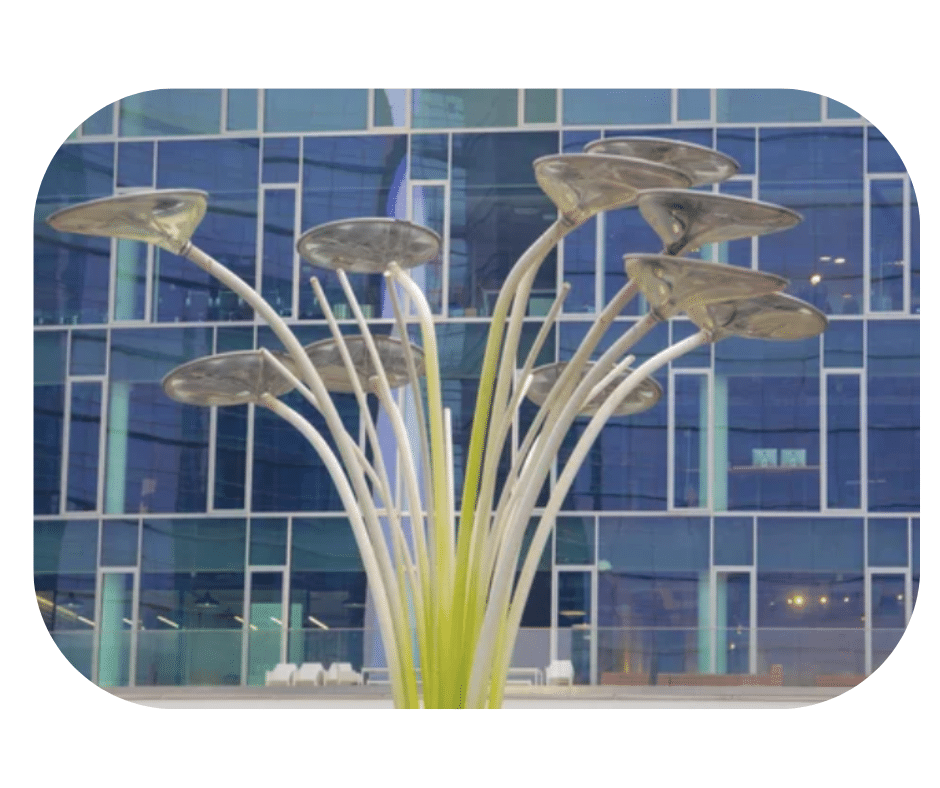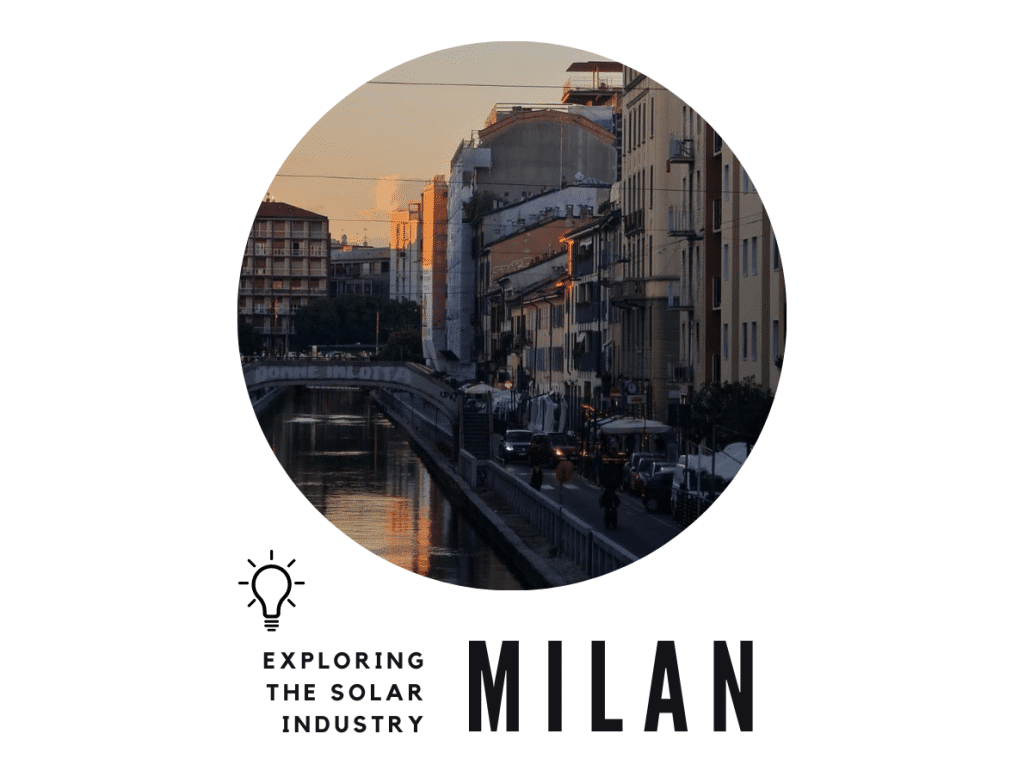A modern, fast-paced metropolis. Overflowing with cash, style, and art, Milan is renowned as the fashion capital of the world. There is an undeniable buzz that permeates the second-biggest Italian city. From the back streets to the city centre.
The culture is endlessly fascinating. The people are wonderful. Warm, passionate, and infinitely patient with my sketchy Italian. Oh, and the food? Sensational.
I’ve fallen in love with Milan. Except for the heat and the mosquitoes.
But it’s impossible not to complain about the climate. I mean, it’s Italy. In the middle of summer. The sun is relentless. Between the hours of 13:00 and 15:00, the streets are practically empty. Locals know better than to venture out, tucking themselves away behind fans and air conditioning.
It’s these hours that make Milan a hotbed for solar power.
Milan is one of the four major economic centres in the EU. The combination of flashy wealth and seemingly endless hours of direct sunlight has resulted in solar panels pv spread across the city. There’s been a huge push for renewable energy in recent years. And a huge amount of cash pumped into it. The Solar Market Parity Italy conference was hosted in Milan just last year. A demonstration of the city’s dedication.
But, as I lather on sun cream and pull on my walking boots, what strikes me isn’t the sheer degree of PV panels perched on homes, it’s the way Milan has completely re-invented solar. How creative they’ve been. The solar industry in Milan is a combination of sustainability and style. Milan is renowned for its modern innovation. For using solar in innovatively breath-taking ways.
CityLife
Wandering around the Golden Triangle, taking in the extensive parade of designer brands, I take a break and wander over to the Navigli District. Treat myself to the aperitivo considered an institution in Milan and deeply gratifying alongside a crisp, sweet glass of vino. The area of Milan I’m staying in is rural, less gentrified, and less glamorous. An entirely different world compared to the high rises and fancy dinners. It has its own gritty charm but feels miles away from the city centre.
The centre is home to these renewable wonders. CityLife is a sustainable marvel, a freshly designed redevelopment project, built from the historic, iconic exhibition centre. Set in Milan’s former city centre, it makes up a duo of low-rise office buildings connected by a solar panel canopy. A combination of work and public spaces, this is a solar-powered marvel. High ceilings will give way to a flood of natural light. A sheltered space that embodies the culture of the cause.
In recent years it’s become a statement of the city’s dedication to sustainability. Skyscrapers have risen from the dust. Powered by renewable energy. The 209-metre Allianz Tower is powered entirely by solar. All 11,000 square metres of PV panels. How incredible is that?
The building is a symbol of the kind of city Milan should be, ‘Sustainable, international, beautiful.’ It’s fashion and sustainability coming together as one. We should never have doubted Milan.
Solar Innovation

As the sun dips below the horizon, I take a stroll to the centre of Milan’s most modern neighbourhood. Piazza Gae Aulenti. Unveiled in 2012, the square was devoted to legendary architect Gae Aulenti. It’s around this time that the square comes alive. A spectacle of music, fountains, and light. In the heart stands a glowing solar tree. It fills the surrounding area, powered by LED. Powered, by solar energy. It’s an example of one of the many ways solar energy can be utilised in innovative ways. In art.
I’m relieved to see that Milan is taking advantage of its prime geographical location. The city is taking its renewable energy targets seriously. Their social housing project calls for zero carbon by 2050. Just like CityLife, the buildings will use renewable energy to heat, cool, and power. Milan is showing the rest of Italy, the rest of the world, exactly what sustainable housing districts could look like. Perhaps we can learn something from the capital of fashion besides what colour goes best with our shoes.
